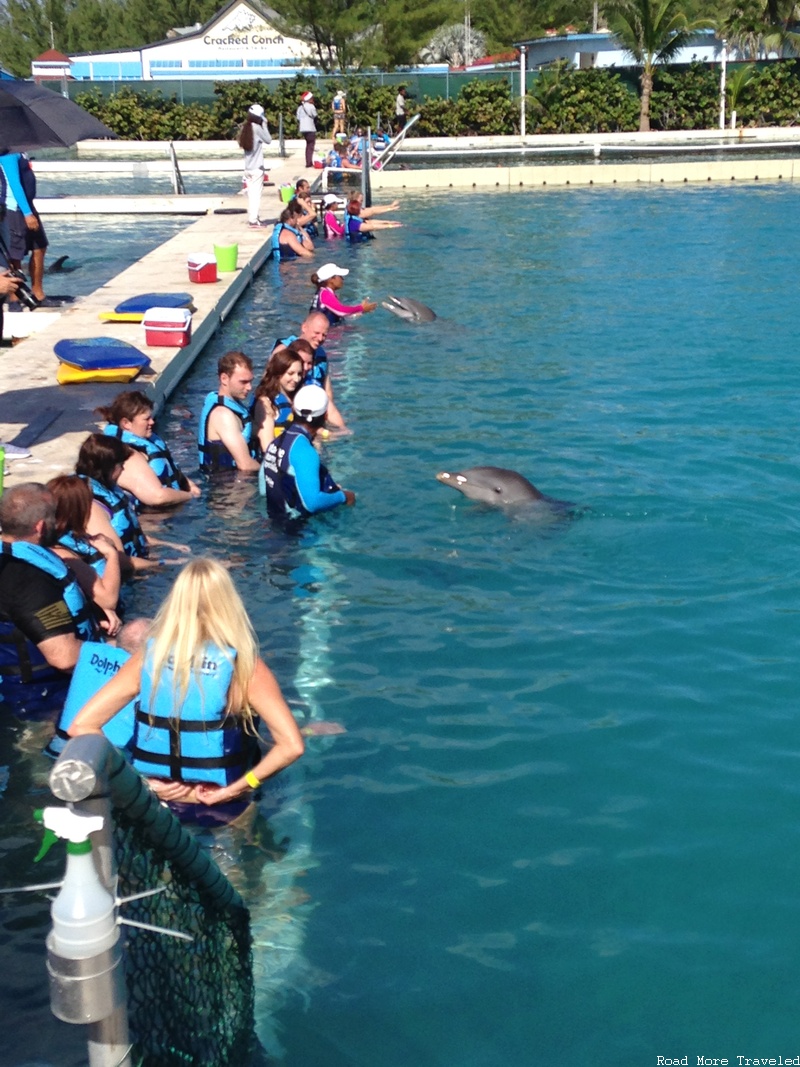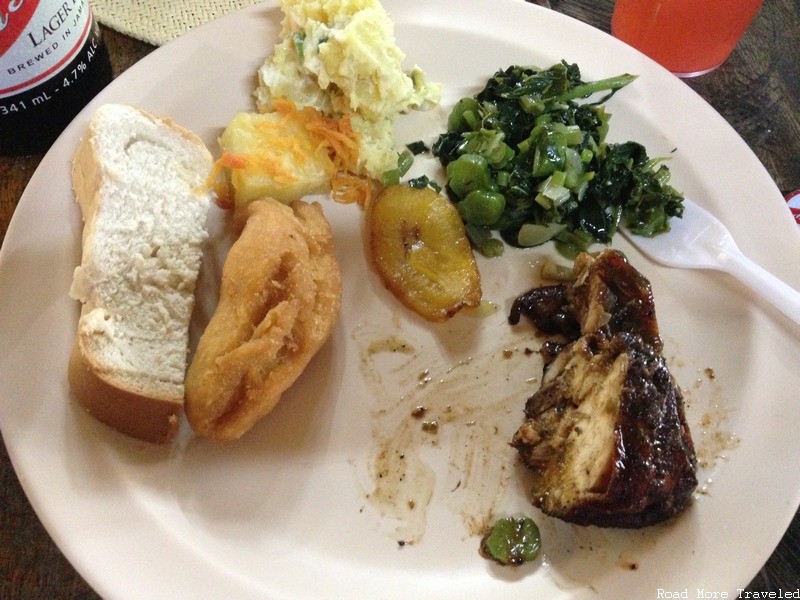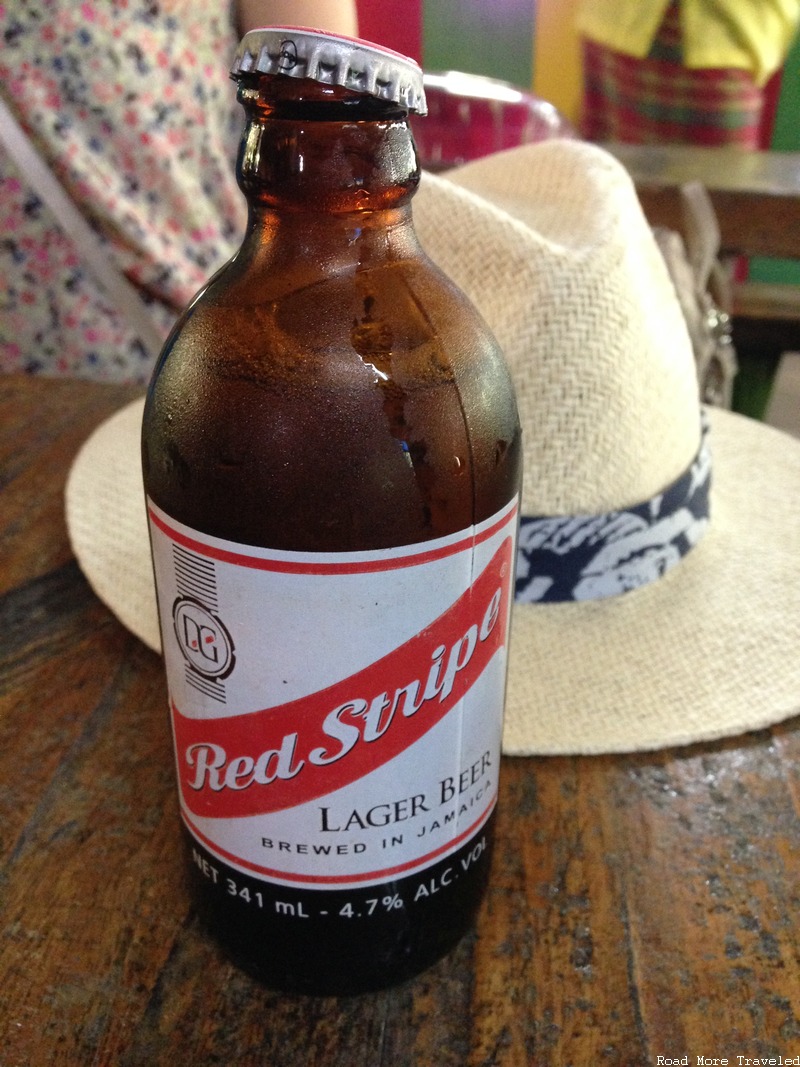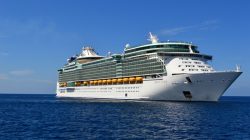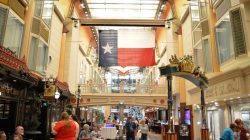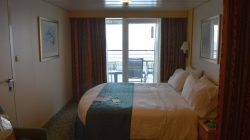Welcome to the final installment of my Galveston-to-Jamaica cruise review aboard RCCL’s Liberty of the Seas. Previously, I covered our balcony stateroom and the ship’s dining. Meanwhile, the first installment covered the ship generally and on-board activities. Today, I wrap things up with a look at the ports of call on our cruise. Please click here for the introductory post and index.
The Route in General
Our ship ran a simple circle itinerary from Galveston, with stops in Cozumel, Grand Cayman, and Jamaica. While all Galveston-based cruises stop in Mexico, they alternate between Jamaica and either Belize or Honduras.
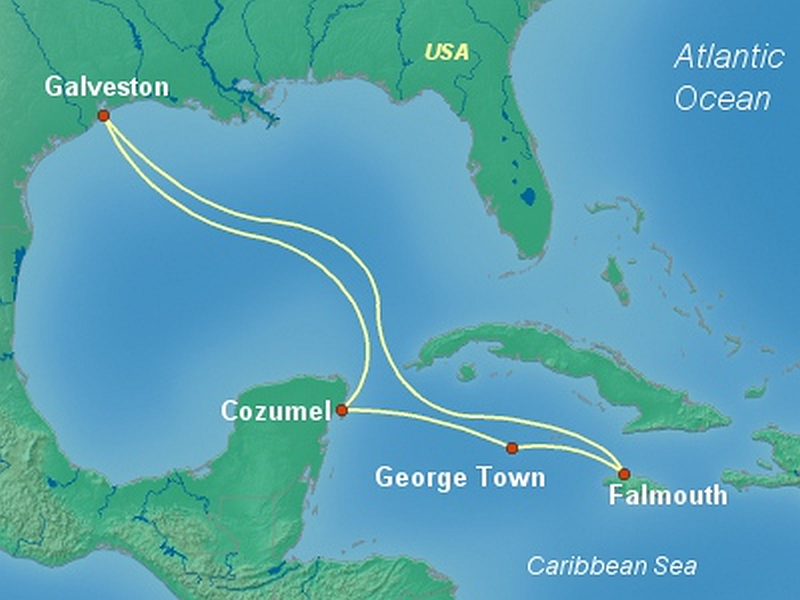
We visited each port for a single day, stopping from roughly 8 am to 5 pm each day. I’ve visited all three countries on cruises before, though our stop in Jamaica was in Montego Bay, not Falmouth. I usually prefer visiting new destinations, but this was the only itinerary that included my actual birthday.
I should say from the start, the activities we chose in Cozumel and George Town aren’t ones I’d normally do. But a baby in tow meant keeping things simple. We figured long days in the heat might be tough. So we chose shorter excursions with less walking involved.
First Port of Call – Cozumel
Our son is something of a sleepyhead – he doesn’t get up until 8 – so I woke up when he did. And a beautiful Mexican morning greeted me from our balcony.
Our stop in Cozumel happened to coincide with my birthday. That meant a cheesy tourist photo from the dock. After all, what screams “Lordy, Lordy, Look Who’s 40” more than standing in a panama hat next to a tuk-tuk.
Anyway, we soon set off on our “Island Roots and Chocolate Traditions” tour. A short ride took us a few miles down the coast to the Mayan Cacao Company, a craft chocolate maker as the name suggests.
The tour of the grounds consist of two main parts. The first is a tour of the botanical gardens, which contains several replica Mayan artifacts. This part of the tour started off with a demonstration of a traditional Mayan invocation prayer. In this case, an invocation to the Mayan jaguar god. Interestingly, they used an incense, sambrani, that we also use in southern India.
As mentioned, the gardens also contain several replica artifacts, including this tapestry showing the Mayan’s counting system.
There was also a mock-up of a prayer altar. My mother and I both found it interesting how it resembles a Hindu prayer room. Especially the use of flower garlands and fruits.
After a short walk around the gardens, guests watch a short presentation on the history of chocolate in Mayan culture. It’s believed that the Mayans were the first to discover cocoa in the early 10th century. In fact, some think the word chocolate derives from the Mayan word “xocolatl”, which means “bitter water”. Bitter, because Mayan chocolate contained cocoa beans, chili powder, and water, as the Mayans had no access to sugar. An exhibit has examples of raw cocoa beans, along with some finished solid product.
Finally, a tour guide provided a demonstration of how to make modern chocolate by hand.
There is an on-site gift shop if you want to buy chocolate or souvenirs. Chocolate prices aren’t bad; souvenirs are expensive, though.
Once we finished up at the chocolate factory, our tour headed to our second and final stop, a tequila tasting. Wheeeeee…what better way to celebrate a milestone birthday! As our guide explained, true “tequila” must use agave sourced from the state of Jalisco, though it is produced elsewhere, including Cozumel. (Any beverage distilled from non-Jalisco agave becomes “mezcal”.) Anyway, the tasting includes generous pours of several types of tequila, of various quality. Which, of course, meant a signature selfie.
After that, we headed back to the ship, in time for lunch. The total tour took about 3 hours, which was just about perfect. Just enough to keep the baby amused, without him getting cranky in the heat. We ended the day on a simple note, enjoying the sunset from our balcony.
I enjoyed our tour more than I expected. The chocolate factory is actually pretty interesting. And who can complain about free tequila on their birthday? So what would I do if I had more time? Many go to Cozumel for diving/snorkeling, and most cruise ships offer many tours for that. Personally, though, I’d spring for this Jeep tour to a hidden beach and ruins. Or just walk the short distance from the port to downtown Cozumel, and enjoy some cheap beer and ceviche.
You can also take a ferry to Playa del Carmen on the mainland, especially if you fancy a tour of Chichen Itza. Just beware, if doing a private tour, make sure to get back to the ship on time. Though I suppose there are worse places to get stuck than Cozumel…
Second Port of Call – George Town, Grand Cayman
I’ll start with the bad part of cruising to Grand Cayman. Thanks to a shallow harbor, cruise ships can’t dock in George Town. You have to “tender” instead. And let me tell you, tendering is a PITA. Think of something similar to taking buses to a remote stand, except for 5,000 passengers. A series of boats take passengers from the ship to dock a few hundred at a time. And the process is hardly a model of efficiency. The boats sit around until every seat gets taken, which often means 20-30 minutes out in the heat. If you don’t have a Royal Caribbean shore excursion, you get a “non-priority” tender ticket that means at least a two hour wait behind those with ship excursions.
All this serves as a warning to expect a limited amount of time to actually do stuff unless you pay for a ship-sponsored shore excursion. If your arrival time says 9, expect to get off the ship by maybe 11, with a final tender back around 3:30. So, plan your day accordingly.
Anyway, with the bad out of the way, let’s move on to the good stuff. For one, Grand Cayman is an absolutely gorgeous place.
We originally booked a tour on the “Trolley Roger“, a trolley ride around the island hosted by a surly pirate. We picked it because it’s cheap, short, and promised to give mini-me something to look at from the shade. One problem, though – someone apparently forgot to tell Royal Caribbean that George Town observes Eastern time. Our ship stayed on Central time, and thus the trolley took off an hour before we got there.
We thought about turning around and going back to the ship, but mom spotted a booth selling tours of the island for $20 a person. So the three of us, and about 5 others burned by #TrolleyFAIL, hopped on the bus to check it out. Ashok seemed to enjoy exploring the back with grandma, at least.
Our first stop – The Old Homestead, sometimes called the “Pink House” or “Gingerbread House”. Built in 1912, it supposedly ranks as the most photographed house in Grand Cayman. Though hard to tell through the bus window, its pink exterior makes it one of a few remaining examples of classic Caymanian architecture.
For our next stop, the entire bus went to Hell, literally. Yes, Hell is a real place, home to some rather strange looking black limestone formations. Interestingly, the formations somewhat resemble those in Death Valley’s “Devil’s Golf Course”. Probably just a coincidence, but kind of funny nonetheless. Unlike Death Valley, you can’t walk on the formations, but there is a platform to take photos.
Of course, combine a place called “Hell” with a popular island destination, and you have a tailor-made tourist trap. A Caymanian with an overactive imagination created The Devil’s Hangout to take advantage. It’s pretty much mandatory that any cruise ship visitor to the Caymans get a photo in front of this sign.
After your cheesy photo, head inside to mail your friends a “postcard from Hell”, literally and figuratively.
Our tour then took us to a spot to pick up the Caymans’ top export, Tortuga rum cakes. We did get a couple of cakes, but there’s also a very nice Caribbean Sea photo spot outside.
The shop also had a counter selling “Tastee Patties“. Intrigued, I asked our driver about them, who described them as veggie or meat-filled turnovers popular with the locals. So I grabbed a pair for $6. They don’t look like much, but they were…ahem…tasty. Even our notoriously picky son munched on part of one.
Our tour finished up with a short visit to Dolphin Discovery. You’ve surely seen one of these on a Caribbean island at some point – a tourist trap where you can swim with dolphins. Personally, I’m not a big fan of these types of things. It seems kind of mean to the dolphins. But Ashok enjoyed seeing the water and the fishies up close, and it let him run around for 15 minutes. So count it as a win.
This tour took a little under 3 hours to complete, so I have to say, not bad for $20 a person. As for other things to do, my brother-in-law tells me that Grand Cayman is the place for scuba diving. If that’s your thing, make sure to do it here. The island also features several beautiful Caribbean beaches, including famous Seven Mile Beach. (We originally thought of heading to one after our tour, but Ashok fell asleep.) Just beware, the tendering situation significantly limits your time ashore, so plan accordingly, and don’t stray too far.
Final Stop – Falmouth, Jamaica
I visited Jamaica on a previous cruise more than ten years ago, when our ship called on Montego Bay. I didn’t remember being terribly impressed, but hey, every place deserves a second chance. My mom also graciously offered to watch the baby so Prita and I could enjoy an excursion on our own. So, we chose a full-day tour, “Go Native Jamaica“. This tour started with a drive from Falmouth to Montego Bay – lots of beautiful beach shots, but unfortunately difficult to take from a moving bus. Our first stop was at the National Heroes Monument in Sam Sharpe Square.
Sam Sharpe was a slave who organized what was known as the “Baptist War Rebellion” in 1832. What originally started as a peaceful protest grew into Jamaica’s largest slave rebellion, one the government crushed ruthlessly. Eventually, the fallout from the rebellion contributed to the abolition of slavery in the British Empire a few years later.
Our next stop brought us to St. James Parish Church, which dates back to the late 18th century. Though substantially renovated following an earthquake in 1957, the church still maintains sculptures by noted artist John Bacon. The beautiful interior resembles many of the old colonial churches you find throughout the Caribbean.
Next, we took a drive up into the rural mountains for the rest of our tour. The first stop was at Mount Olive Basic School, a primary school for first through third graders. Apparently, the school has an arrangement with tour companies to bring visitors during the day, to give them an idea of school conditions for the average islander. The school is a basic, three-room schoolhouse, one for each grade. Getting photos of the interior proved difficult with all the people around. The kids seemed excited to get a short break from their lessons anyway. As we left, the head teacher led a short singing performance in Patois, a mix of Creole, English, and West African dialects spoken as a native language in Jamaica.
This stop also provided a good vantage point for rural, mountainous Jamaica. The mountains away from the immediate coast certainly make Jamaica unique from Cozumel or the Caymans. I thought the landscape closely resembled that of southern and western India, especially Kerala.
After a thorough lower lumbar adjustment down some dusty roads, we arrived at our final stop, Johns Hall Plantation. The plantation land grant extends back to the late 18th century, though the buildings you see today are far more recent construction. I believe Johns Hall was a sprawling sugar and rum plantation at one time. Today, it’s mostly a stop for cruise ship passengers to enjoy the scenery and some Jamaican food. As you arrive, you get in your exercise for the day with a walk up a steep hill among the jungle foliage.
Along the way, you see a few animals running about. I expected to see this rooster.
But I didn’t quite expect to see this peacock strutting around.
Once at the top, you enjoy a nice view of the surrounding mountains and jungle.
Finally, we enjoyed a Jamaican-style lunch, featuring jerk chicken, plantains, collard greens, and a few other assorted goodies. No, it’s not authentic as what you’d get on the street in Montego Bay, but it was tasty enough.
And of course, enjoy a Red Stripe beer on the side for $2.
This tour clocked in at 5 1/2 hours, leaving a few minutes after 10 and arriving back at the port around 4:30. And of course, once aboard, we enjoyed yet another Caribbean sunset, this one behind the mountains.
As the ship sailed away, we then enjoyed a pretty view of the Port of Falmouth at dusk.
This wasn’t a bad tour, but as with many ship-sponsored tours, it would have been better with about 1/4 the people. 30-40 people visiting someplace at the same time keeps things on a tight schedule, limiting the chance to explore. And makes it nearly impossible to take photos without multiple photobombers getting in the way. You can take the kiddos along on this tour, but I’d imagine younger kids would get bored.
Nevertheless, a day up in the mountains was a nice break from the same old beach and water. As for other cruise passengers, many opt for a day exploring the island’s waterfalls, or going ziplining. I’m far too much of a wuss to go ziplining. But when Ashok is older, maybe I can talk him into going off-roading in a dune buggy.
Final Thoughts
I enjoyed Falmouth the most on this cruise. In fairness, though, that was partially because we chose not to do much in the other ports. My advice – do the beach in Mexico, and take a more active tour in Jamaica. You’ll probably want a break of the beach by then, anyway. Grand Cayman probably had the prettiest beaches and water, but unfortunately, the tendering situation may leave you with insufficient time to do much. Especially if you don’t want to pay for one of the ship’s large-group excursions.





















